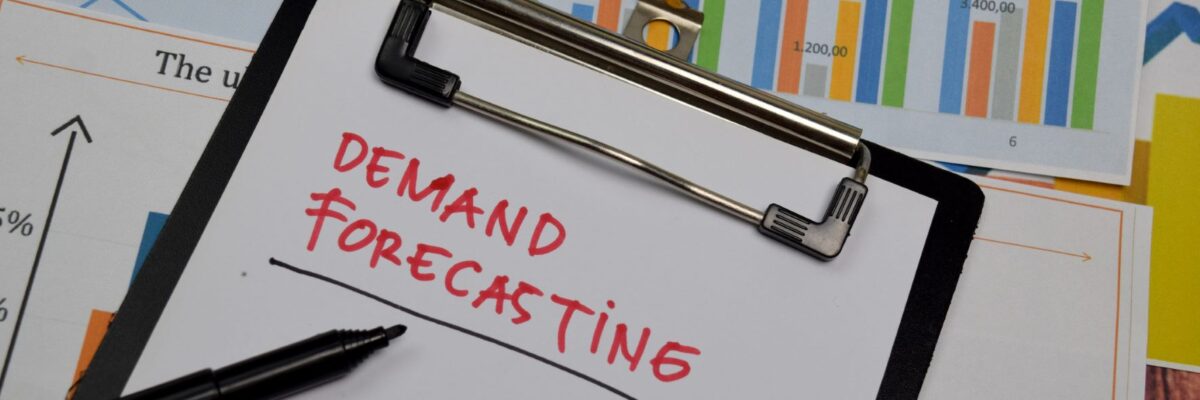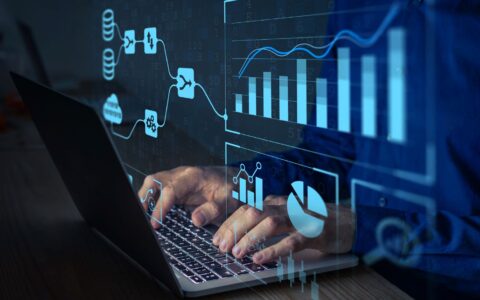
For the supply chain to work properly, a lot needs to be forecast and anticipated. The manufacturer must know how much it should produce in order to prevent losses. The retailer must stipulate how much it will sell so as not to experience out-of-stocks or be stuck with idle stock. In these situations, demand forecasting can be of great help.
What is demand forecasting?
The name may seem a bit self-explanatory, but the concept itself is applicable beyond the obvious. Demand forecasting is a market estimate, focused on anticipating what will happen in the future and which can directly impact the productive area of a company, whether a manufacturer or retailer.
Also called demand estimation, it involves the analysis of internal and external variables, in order to anticipate consumption trends that require planning to be supplied.
Demand forecasting and business planning
Demand forecasting can help companies from any segment to have a more assertive planning on three different fronts: operational, tactical, as well as strategic planning.
Operational planning, performed by supervisors, becomes more efficient because they work with clear objectives and seek specific results, which simplifies the work routine in the short term.
As for managers, they have a broader view of the business, and based on what was forecast, they can plan specific medium-term tactical actions for different sectors or business units.
Finally, directors can use demand forecasting to assess not only the company, but the market as a whole. This makes it easier to generate insights, gives visibility to potential opportunities and allows for a strategic long-term management approach.
4 steps of demand forecasting
To implement a demand forecasting strategy, there is a system that can be followed. Of course, there is no simple recipe: the variables will depend on a number of factors. But, as a general rule, there are some steps that can be followed. Check them out below:
1 – Defining the objective
Goals are critical to quantifying the success of sales and strategies in any segment. In the case of demand estimation, the objective is related to the term (it can be short, medium, or long term) as well as with the object of study. Is the forecast about a specific market segment, or about a particular product? This is all fundamental for targeting the research.
2 – Defining the Methodology
Demand forecasting can be applied through qualitative or quantitative methods. In the first scenario, everything is estimated based on subjective factors, such as expert opinions, a salespersons expectations and customer perceptions. In the case of quantitative methods, hard data (sales history and inventory turnover, for example) are used to support forecasts.
In qualitative methodology, the Delphi method is one of the most popular. It consists in assembling a group of experts who, separately, answer relevant questionnaires and analyze the opinions of others until an average is reached. In the quantitative methodology, moving average calculation, statistical formulas, and models such as ARIMA (Autoregressive Integrated Moving Average) are the most used.
3 – Data collection
After the study method is defined, the data collection phase that will guide the entire process takes place. Your own data helps define consumer behavior regarding your business, while third-party information helps to understand market dynamics.
4 – Interpretation of Results
Finally, after the data has been properly collected and analyzed, comes the interpretation stage. This is the stage that leverages the experience of managers and the knowledge of professionals in the financial area, and according to the established objectives, they can cross reference the data with socioeconomic and financial statistics to add even more value to the generated insights.
Demand forecasting x sales forecasting
Although these are similar terms, demand forecasting should not be confused with sales forecasting. The first one is much more focused on determining consumer interests and considers economic and seasonal factors. The second one forecasts the revenue that is expected for a specific period.
Note that while sales forecasting is focused only on the revenue generated by what is sold, demand forecasting goes beyond that, as it analyzes the market as a whole, including competitors, to be based on broader indicators that support decisions of greater impact.
This difference between the two concepts translates in each study. By considering more than sales, demand forecasting is of vital importance for businesses looking for expansion possibilities.
Imagine, for example, that a beverage manufacturer wants to increase its product portfolio or enter a new market segment. Before venturing to new horizons, it needs to know if there is demand and space for its business.
Without a previous study, there is a risk that it will operate in a market that may not need its product, or where more well-established players block visibility to new competitors.
The importance of demand forecasting
As we have seen, demand forecasting is not necessarily linked to the number of sales, but to market behavior. Precisely for this reason, it is important for both manufacturers and retailers.
The manufacturer can use this strategy to measure how much it will need to produce, always considering relevant variables. A tanning lotion factory, for example, knows that it sells more in the summer, so its efforts should focus on this period.
This avoids waste of raw materials and overproduction. The entire production cycle is better balanced, since there is a forecast of how much should be produced.
Retailers, in turn, make their purchases with greater control, knowing, based on their own history, the quantity of each item that will be needed. No out-of-stock or excess inventory: ideally, there are no products missing from the shelf, nor idle products in the warehouse.
A well-planned inventory prevents losses: the turnover rate is more dynamic, and space is much better used. Thus, even maintenance costs can be reduced.
In both cases, analyzing demand forecasting data gives the manager the right tools to make more assertive decisions, assess market potential and new business possibilities.
Technology and demand forecasting
Preparing for the future, and especially in the supply chain, everything must be done based on data. The idea is not to “guess” what might happen, but to foresee potential scenarios based on actual information, especially if the methodology used is quantitative.
[[[material-id-0|e4f2640c-62d6-4fb5-90af-d49d0e3e83c7]]]
For this process, the part of collecting and organizing data does not need to be laborious and bureaucratic: technology is capable of improving the operational efficiency of the manufacturer at retailers, optimizing the decision-making process.
In addition to collection, technology can also support companies when processing demand forecasts, using algorithms and statistical methods that will take all the information we mentioned above and perform the calculation according to each context.
If you want to learn more, talk to one of our experts, and keep following our blog.




